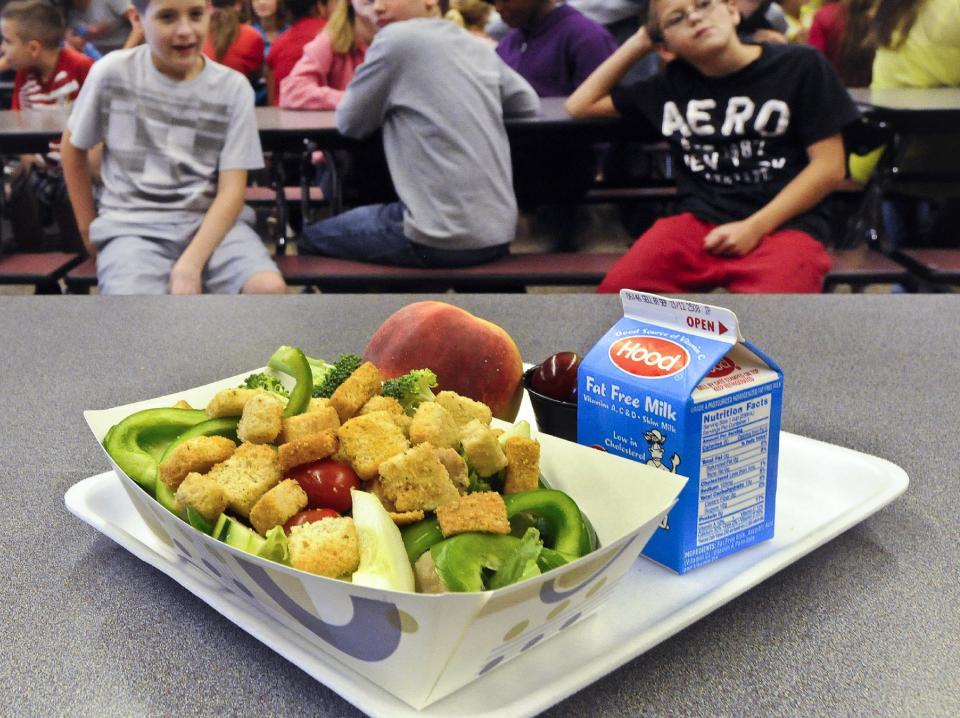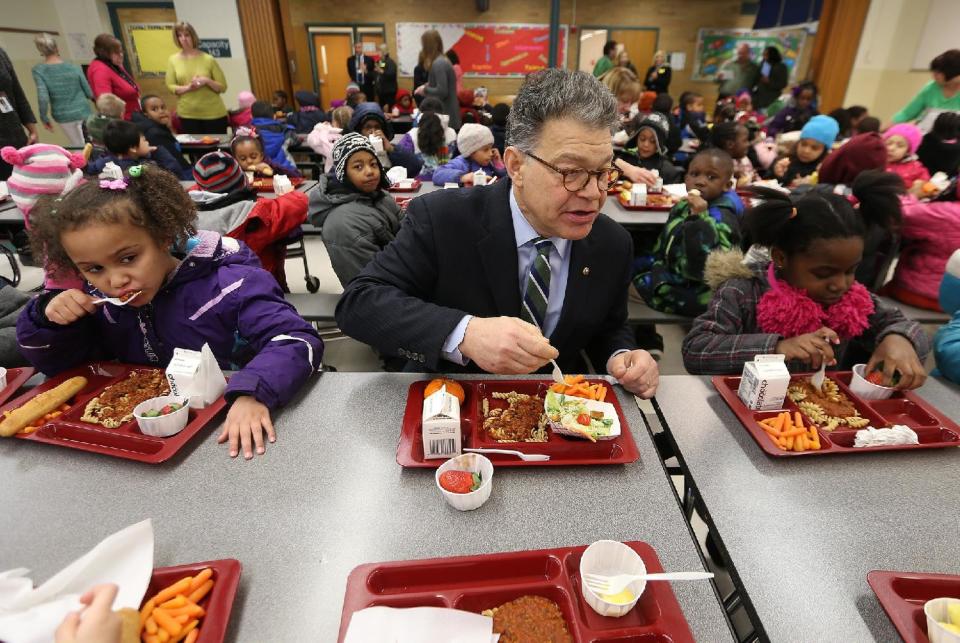Kids are accepting healthier school lunches: survey
By Shereen Lehman NEW YORK (Reuters Health) - A recent study suggests that most elementary age students are okay with eating the healthier school lunches required by the USDA. Despite early complaints from kids when the new menus were introduced in the fall of 2012, researchers found that by the second half of the school year, sales of school meals were up among disadvantaged kids, an important target audience for the healthier fare. “At 70 percent of elementary schools across the country, school leaders perceived that students liked the new lunches,” Lindsey Turner, coauthor of the study, told Reuters Health. “This is great news, as it suggests that students generally have been quite accepting of the standards, which have substantially improved the nutritional quality of school meals,” said Turner, a researcher at Boise State University in Idaho. The National School Lunch Program provides meals to 31 million students each year. The updated USDA standards intended to improve the nutritional content of school lunches were first implemented during the 2012-2013 school year. A previous study by the Government Accountability Office suggested that those new standards presented challenges for schools because they had to plan new menus and had to deal with the increased cost of serving more fruits and vegetables. There was also concern that students would throw away the healthier foods. Since the changes are relatively new, and it isn’t clear how kids feel about them, Turner and her coauthor Frank Chaloupka of the Institutes for Health Research and Policy at the University of Illinois in Chicago decided to survey elementary schools about the kids’ reactions to the healthier lunches. The researchers sent surveys to schools nationwide during the spring of 2013 and a total of 482 schools responded. School administrators and food service personnel were the ones answering questions about the schools’ food offerings, whether lunch sales had changed from the previous year and if students ate more or less of their meals. The respondents were also asked if students complained about the new lunches. At 56 percent of schools, respondents said that kids did complain at first. But 70 percent of the survey participants said that kids liked the lunches at the time of the survey. At schools where more than two-thirds of kids are disadvantaged and eligible for free or discounted lunches, survey respondents tended to say that more children were buying the lunches than in previous years and that kids were eating more of each meal. At rural schools, though, respondents were more likely to say that fewer kids were participating in the lunch program and more were complaining about the new food offerings, the study team reports in the journal Childhood Obesity. That finding is worrisome, the study authors write, because obesity is an even bigger problem in rural than in urban areas. “So, it will be important for the USDA to have resources to continue to provide support to school food service professionals as they work to meet the new standards with menus that are appealing and acceptable to kids,” Turner said. She added that parents could also encourage the kids to embrace the new foods by serving healthier meals at home. “It's really helpful when messages to kids about healthy eating are consistent at home and at school, so parents can also reinforce the value of healthy eating by encouraging their kids to try new foods, especially a variety of fruits and vegetables,” she said. “Parents can also support the efforts to make school meals healthier by making their voices heard, and speaking up to support dietitians and food service professionals at their schools, as they are working hard to promote nutritious practices that keep kids healthy,” Turner said. “The perception of school personnel regarding student acceptance of healthy school lunch is important,” Colleen Kelly told Reuters Health in an email. Kelly is a family nurse practitioner with the Montefiore School Health Program in New York. She was not involved in the new study. She added, however, that from her experience with an urban school health program it’s the perception of the students themselves that matters. “It’s the creation of a school culture positively encouraging kids to eat nutritious meals that ultimately leads to better health outcomes,” she said. SOURCE: http://bit.ly/1oGo73X Childhood Obesity, online July 21, 2014.




